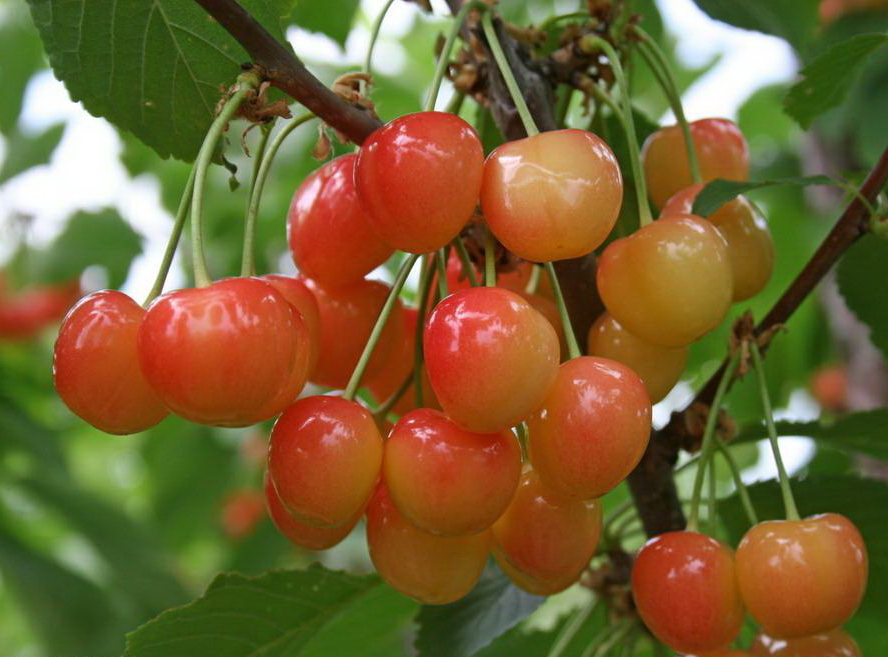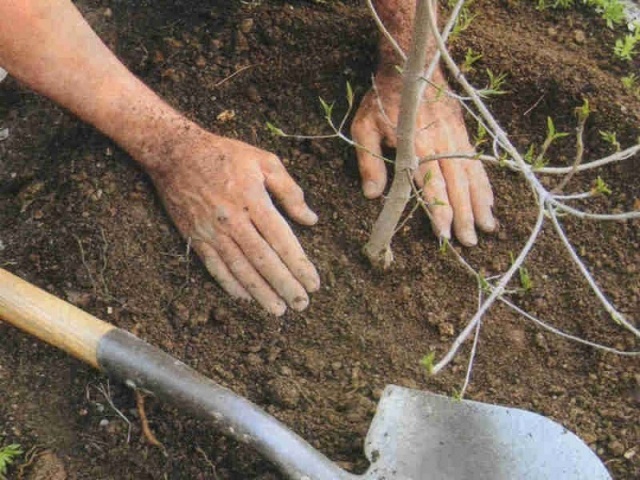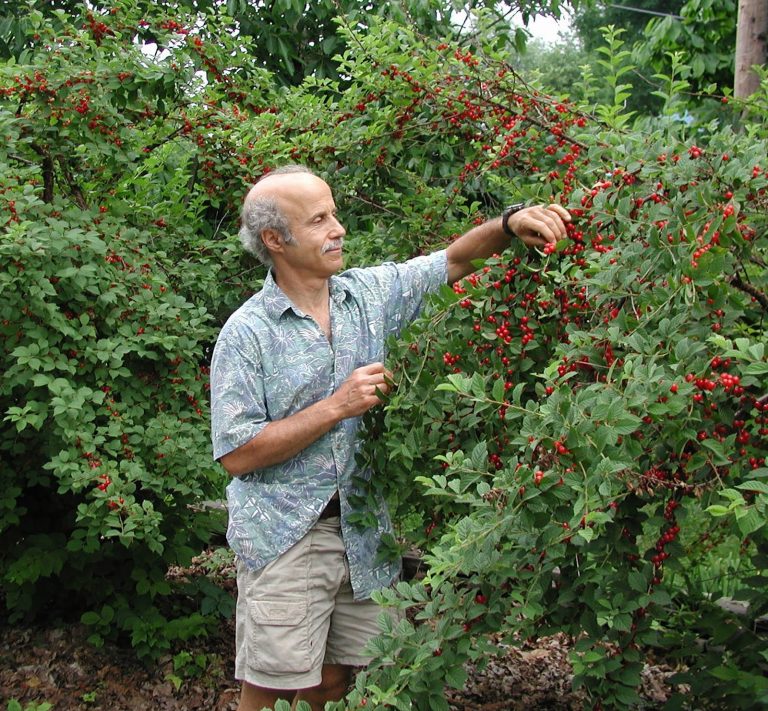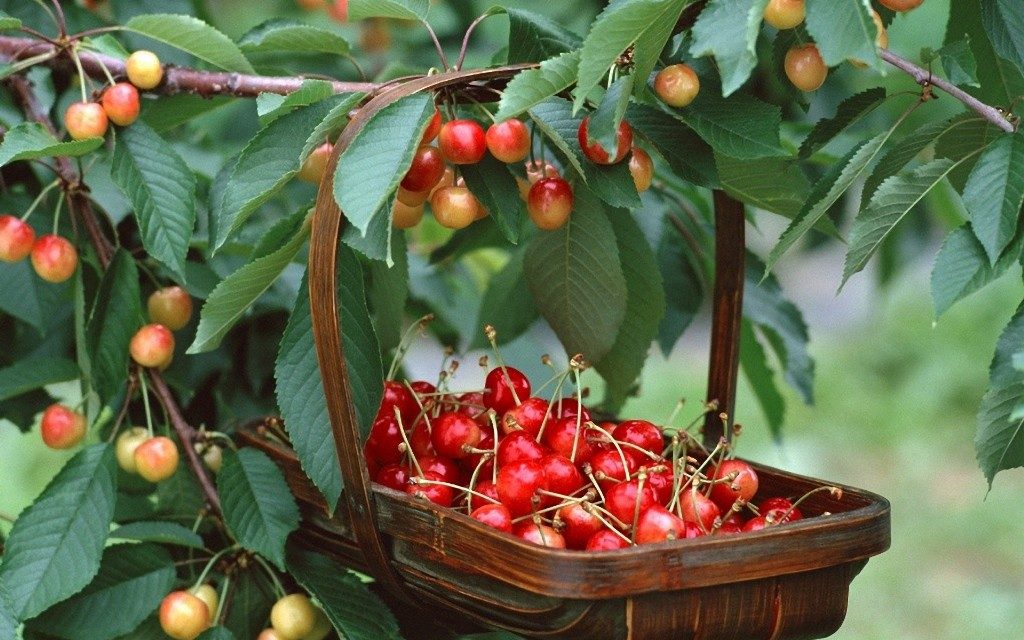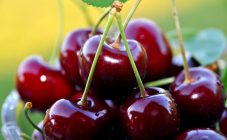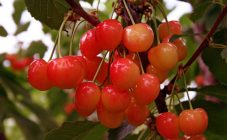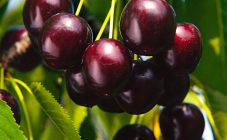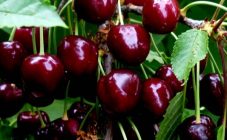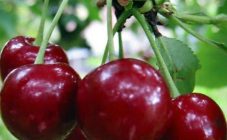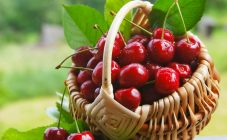Content:
Sweet cherry varieties Bryanskaya pink was bred by breeders of the All-Russian Research Institute of Lupine in the city of Bryansk. The authors are Astakhov and Kanshina. The state test took place in 1987, and after 6 years it was zoned in the Central Region. Currently, the hybrid is popular and widespread in central Russia. Belongs to the group of late-ripening varieties. The early ripe varieties of light-colored cherries include such hybrids as: Early pink cherry and Pink pearl.
Characteristics of the variety
Sweet cherry is a woody plant of the Pink family. Plants grow intensively at a young age, forming buds of three types: vegetative, generative, mixed. The fruit of a sweet cherry is a drupe with a juicy pericarp of yellow, pink, red, black color. Many people confuse cherries with cherries. The difference is that the sweet cherry has a straight stem, light bark and whorled leaves.
Morphological features
A tree with a moderately dense crown, resembling a pyramid in shape. Height is approximately 3-3.5 meters. Straight brown shoots have a smooth surface. Skeletal branches are at an acute angle. Small buds in the form of an egg (vegetative) or oval (generative). Green leaves, rounded at the base. There are jags along the edges of the sheet surface. The sheets are attached to thick petioles. They contain a pair of pink glands. The length of the petioles is medium.
The white flowers are glass-shaped and form a tricolor inflorescence. The pink-yellow berries have a rounded shape and a dense skin that protects the juicy flesh.
Berry weight is about 4 g. Taste is good. The berries tolerate transportation well. The variety is grown for the preparation of non-alcoholic and alcoholic drinks, desserts, and they are consumed fresh.
Flowering and fruiting later. Plants begin to bloom in mid-May, and the fruits begin to ripen by early August. The tree bears fruit in its fifth year. From one tree, you can harvest 20 kg of berries.
The variety has medium frost resistance, so the plants can be grown in cold climates. Trees are demanding on sunlight. Young seedlings are susceptible to strong winds.
Pests and diseases
Sweet cherry Bryansk pink is resistant to such common diseases of stone fruit crops as moniliosis, coccomycosis, clasterosporia. Pink cherries can be affected by pathogens if cherries are growing nearby. The likelihood of infection increases during wet weather. Insects such as caterpillar, aphid and sawfly cause the greatest damage to plants and must be controlled. If infected leaves or branches are found, they must be removed from the plant.
Agrotechnics
The tree is planted in autumn and spring. Spring planting should be started after the snow melts and the soil warms up slightly. It is best to plant in spring, so the plant will have more time to adapt to frost.
When choosing a landing site, several conditions must be met.
- The selected area must be protected from strong winds.
- The place should be well lit by the sun.
- It is recommended to plant plants on a hill.
By placing the plant in such conditions, one can hope for a good harvest.
Rows must be placed at a distance of 5 meters. Seedlings should not interfere with each other, so they are planted every 3 meters.
Before planting plants, you need to prepare the soil well in advance. The best soils for Bryanskaya rosea are loamy fertile. They do not retain moisture and have good aeration. If the site has clay and sandy soil, you will have to add sand to the first, and clay to the second. Then you should fertilize the soil well with organic or mineral additives.
A mixture of organic and mineral components is added to the dug holes. The most common: superphosphate 30 g, KCl 20 g, compost 10 g. Then you need to carefully place the roots in the hole, placing the root collar at a height of 5 cm from the soil surface.
Plant care involves watering, feeding, pruning. In the first year of planting, abundant watering is required. It continues until the trees take root. After that, you can water once a week.
Plants are fed with mineral supplements twice a year, starting from the third year after planting. Urea is introduced in the spring, and superphosphate and potassium sulfate in the fall.
Pruning should be started immediately after planting. The upper part of a young seedling is trimmed so that the height of the plant does not exceed 70 cm. Garden var is applied to the sections. In the summer, pinching of young branches 60 cm long is carried out. Due to this, the ripening of berries is accelerated. When reaching a height of more than 2 meters, you need to remove the top of the shoot. In the spring, branches that have not endured the winter are cut off.
The biological characteristics of the variety imply the creation of shelters for plants for the winter. The trunk is covered with spruce branches, and the near-trunk circle is covered with fallen leaves.
Advantages and disadvantages of the variety
Of the shortcomings, amateur gardeners note, first of all, the lack of the ability to self-pollinate the variety. For this, other varieties of cherries must be cultivated in the garden. Another disadvantage that is often noted is the small size of the berries.
Pink cherry has more advantages than disadvantages. Plants are weakly affected by diseases, as they have good immunity. The berries are tasty, easy to transport and do not crack. Trees have a moderate growth rate.
Bryansk pink is one of the most popular varieties of sweet cherries. The hybrid is famous for its versatility and simplicity. To obtain a high yield of berries, choosing the right place for planting and timely watering will be an important step. Correct plant formation will accelerate the ripening of berries and increase the productivity of trees. The variety has excellent taste characteristics. Various drinks and desserts are prepared from pinkish berries. The variety appeared not so long ago, but it has already managed to win the attention of many gardeners and summer residents.
